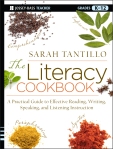 One way to think about RPM (Rigorous, Purposeful, Measurable) objectives is to ask yourself, “WHAT strategies are we practicing, and WHY?” PS–This is not to say that you shouldn’t also consider how to measure the WHAT, but as you begin to create RPM objectives, it may help if you start with these questions. The next post will address measurability. For now, here are some examples of effective RPM objectives. The WHAT precedes the phrase “IN ORDER TO.” The WHY follows it.
One way to think about RPM (Rigorous, Purposeful, Measurable) objectives is to ask yourself, “WHAT strategies are we practicing, and WHY?” PS–This is not to say that you shouldn’t also consider how to measure the WHAT, but as you begin to create RPM objectives, it may help if you start with these questions. The next post will address measurability. For now, here are some examples of effective RPM objectives. The WHAT precedes the phrase “IN ORDER TO.” The WHY follows it.
- SWBAT identify and describe a character’s actions IN ORDER TO draw inferences about the character.
- SWBAT draw inferences from chapter #___ of ______________[title of text] IN ORDER TO make predictions about the characters’ behavior and the plot.
- SWBAT ask questions about _______________[title of text] IN ORDER TO generate ideas and explanation about the author’s arguments/messages.
As you draft your RPM objectives, it would be great to compare notes with colleagues who teach the same grade(s). Developing common objectives that address the Common Core literacy standards across different subject areas should help your students meet and exceed those standards.
